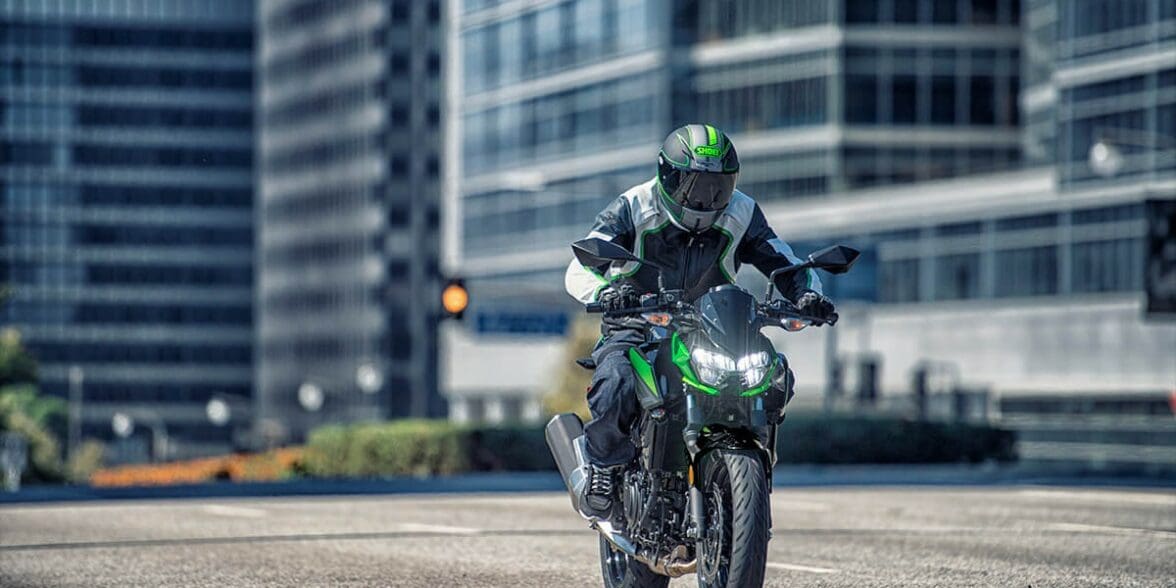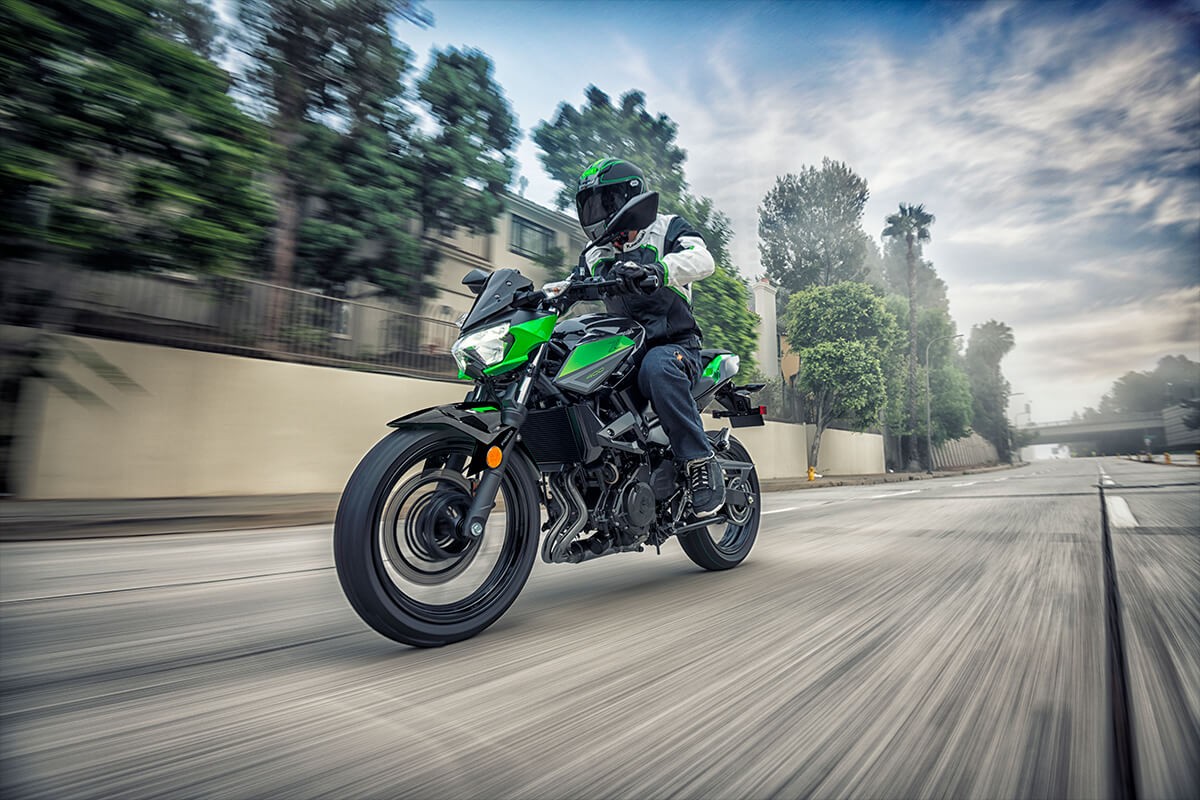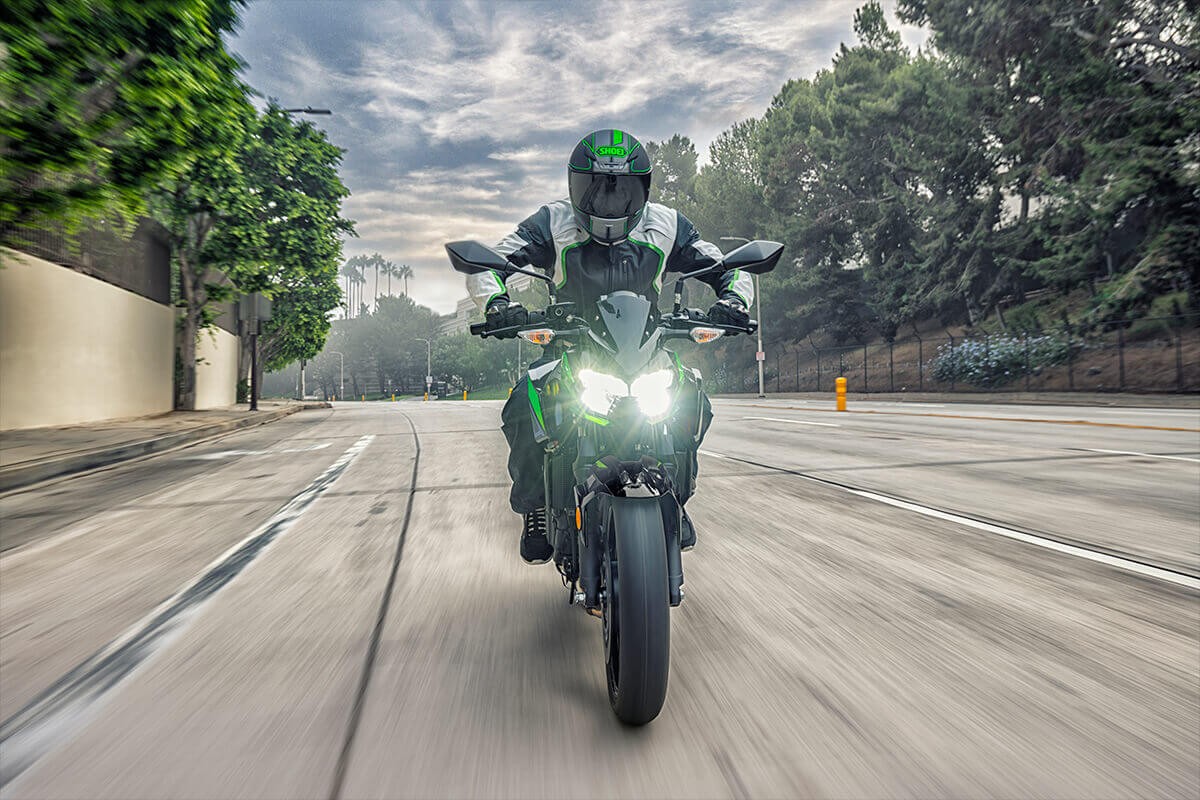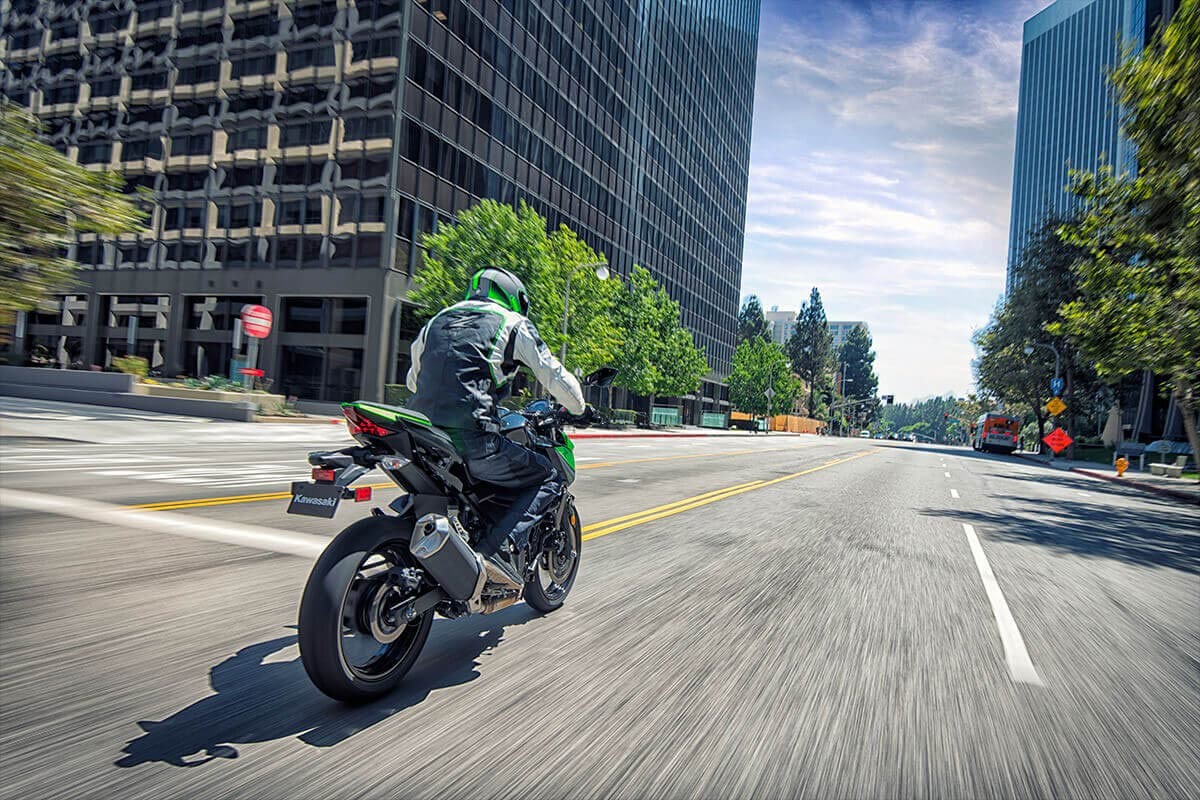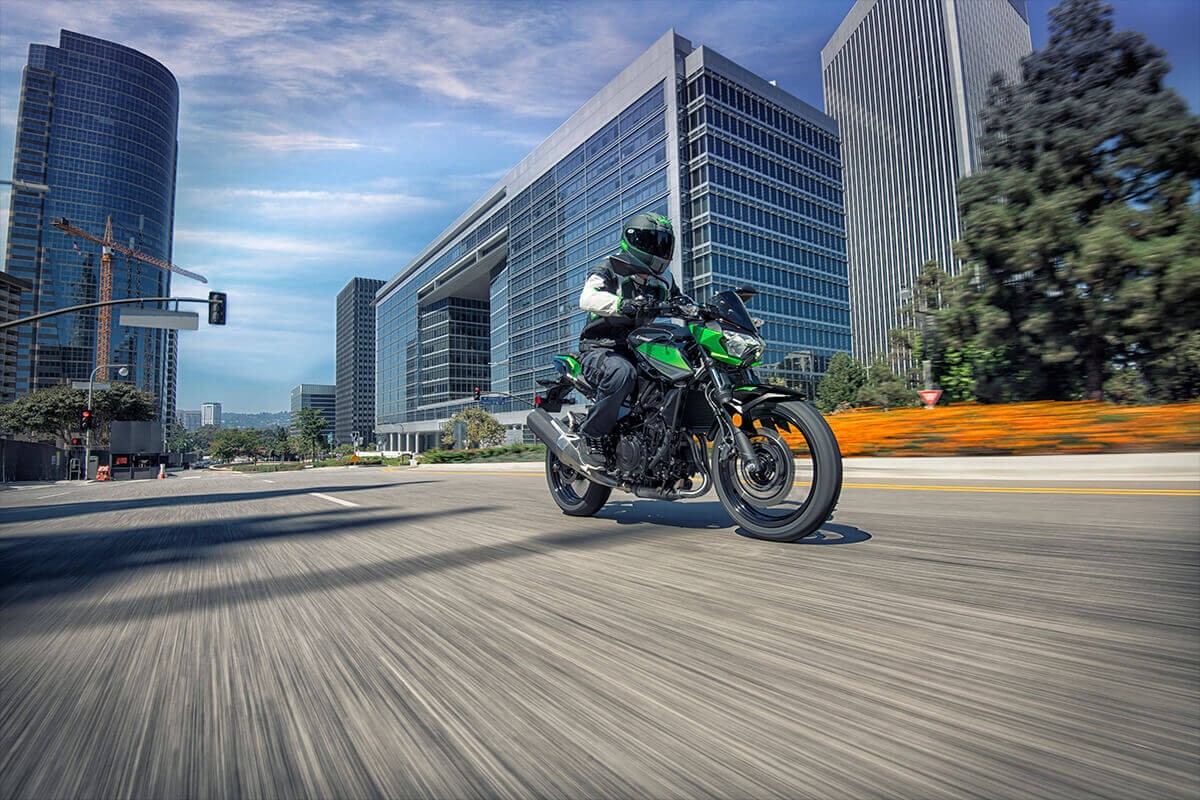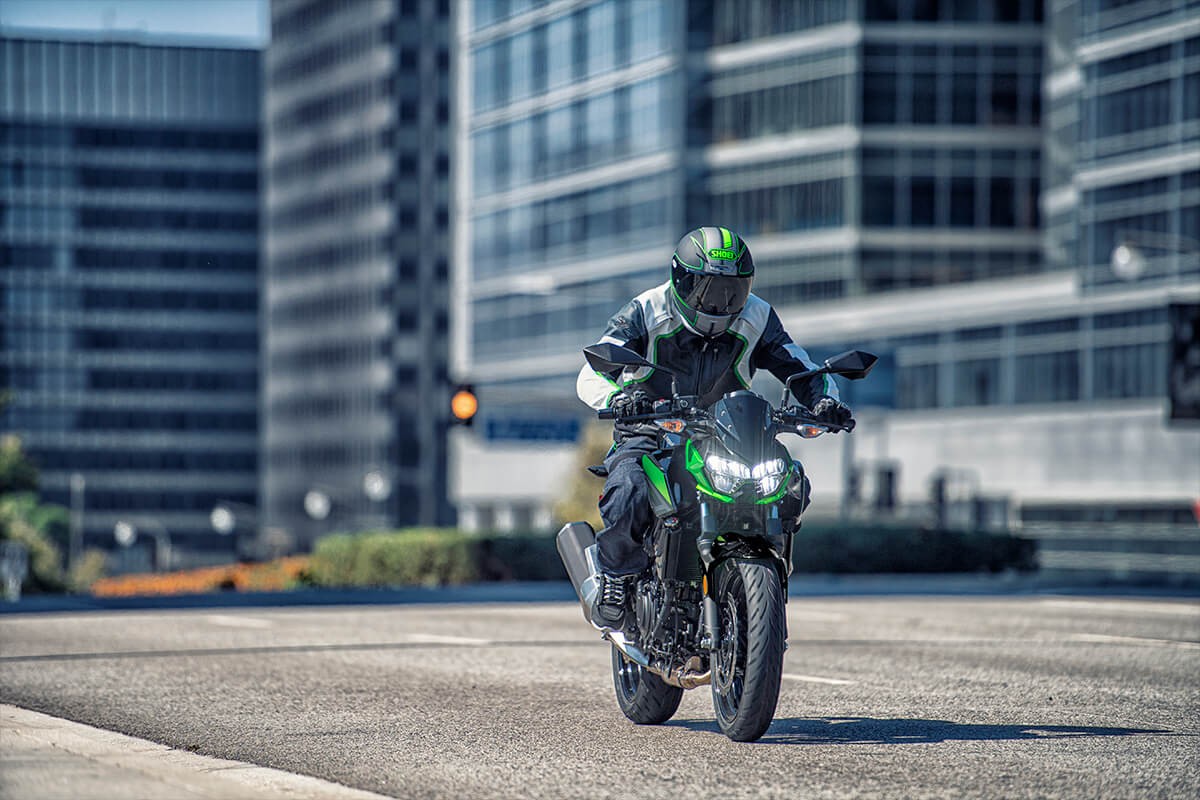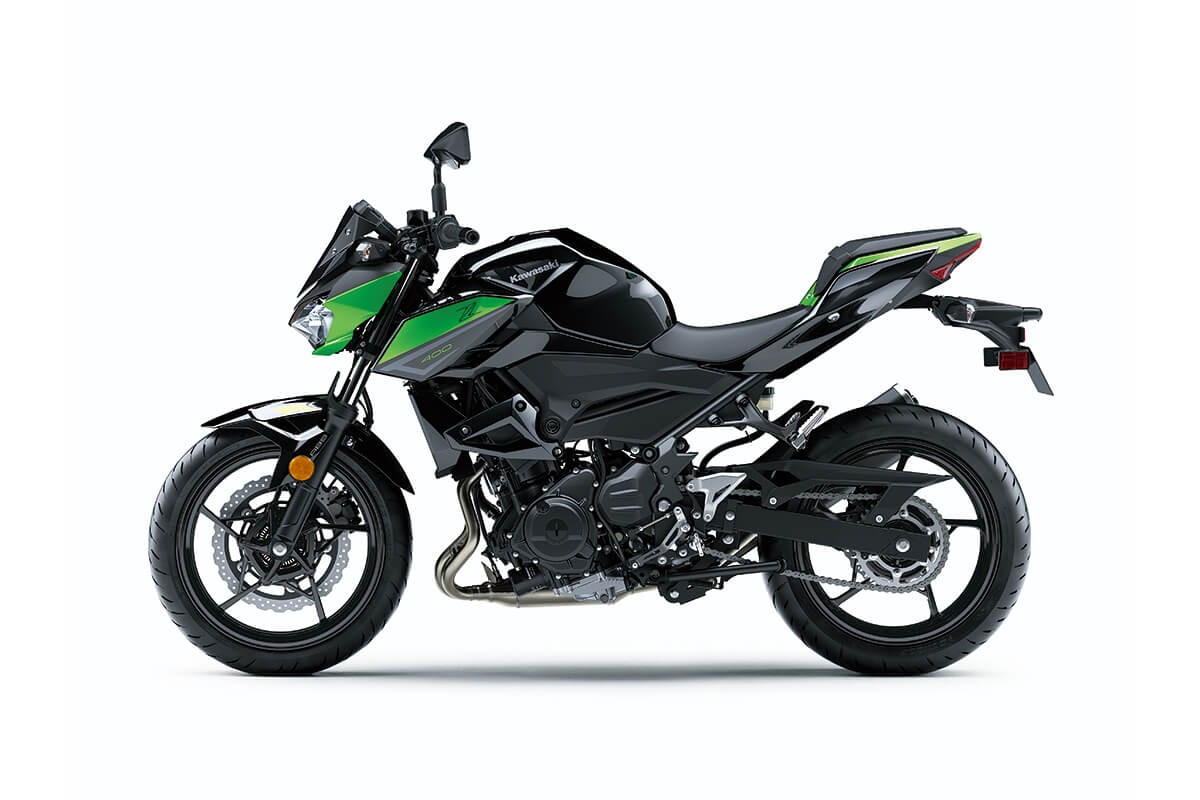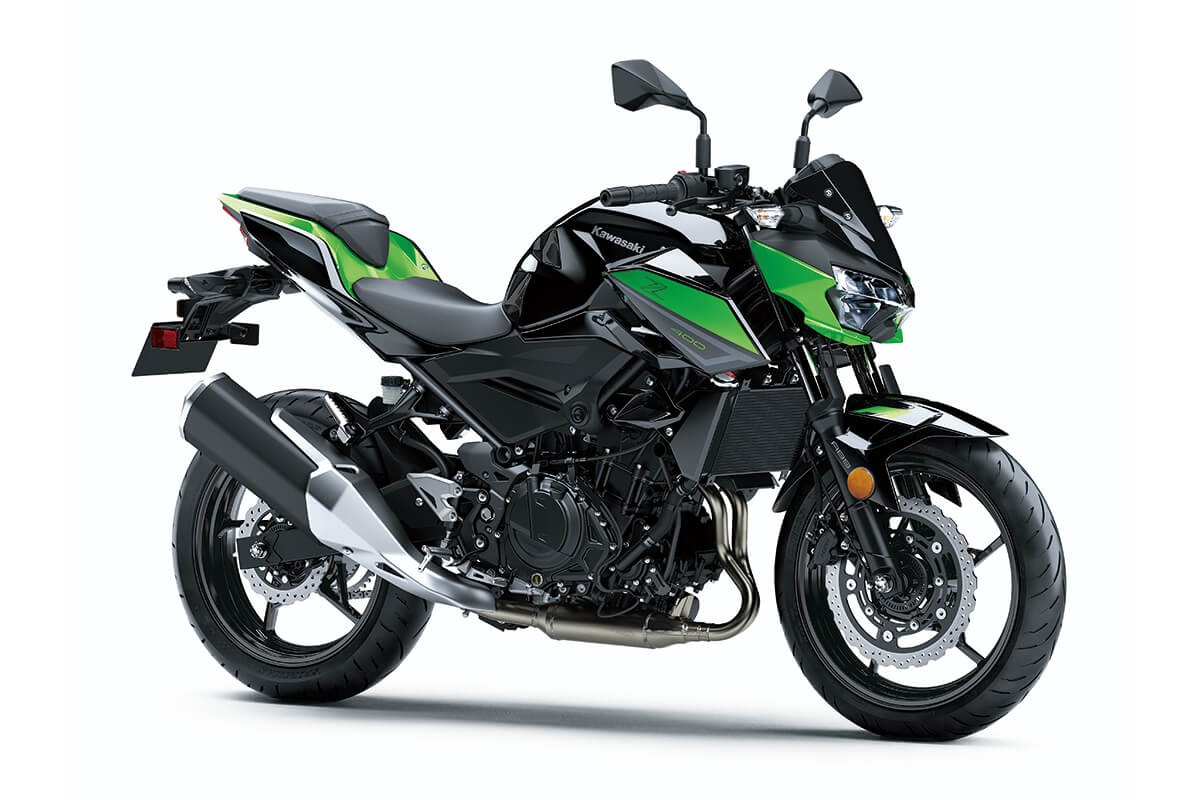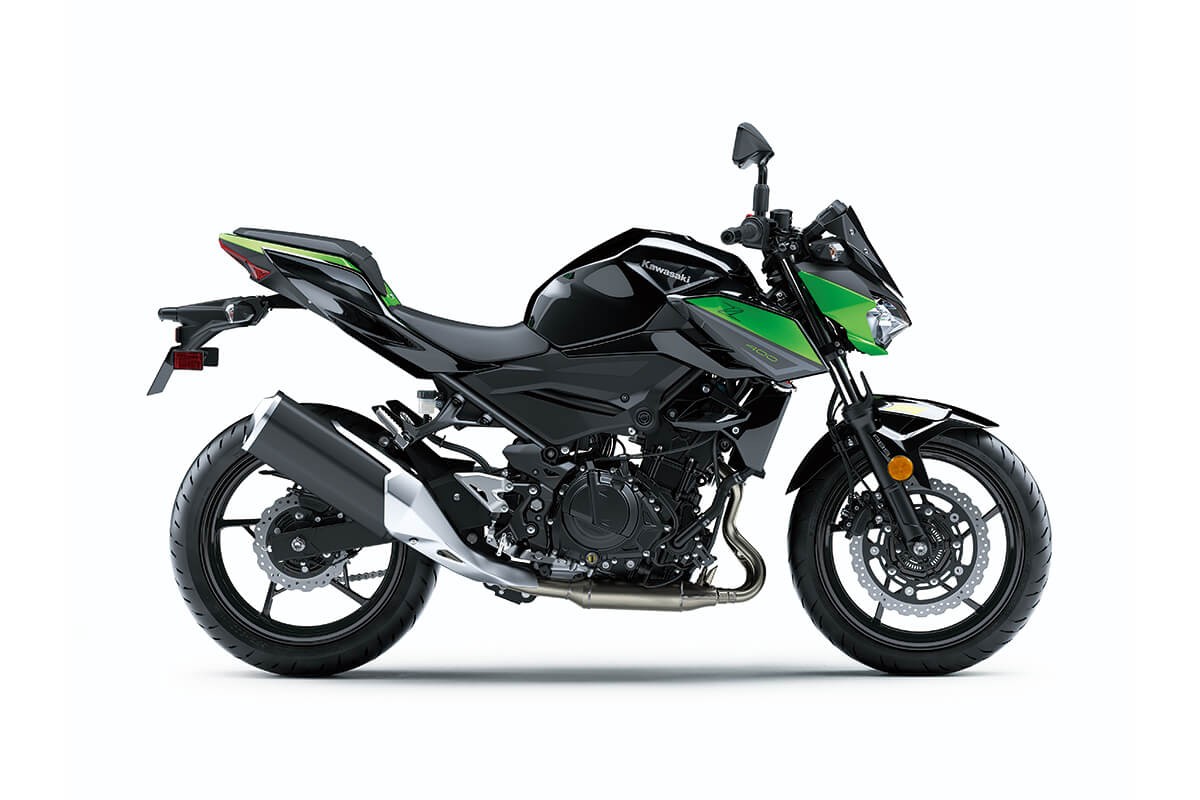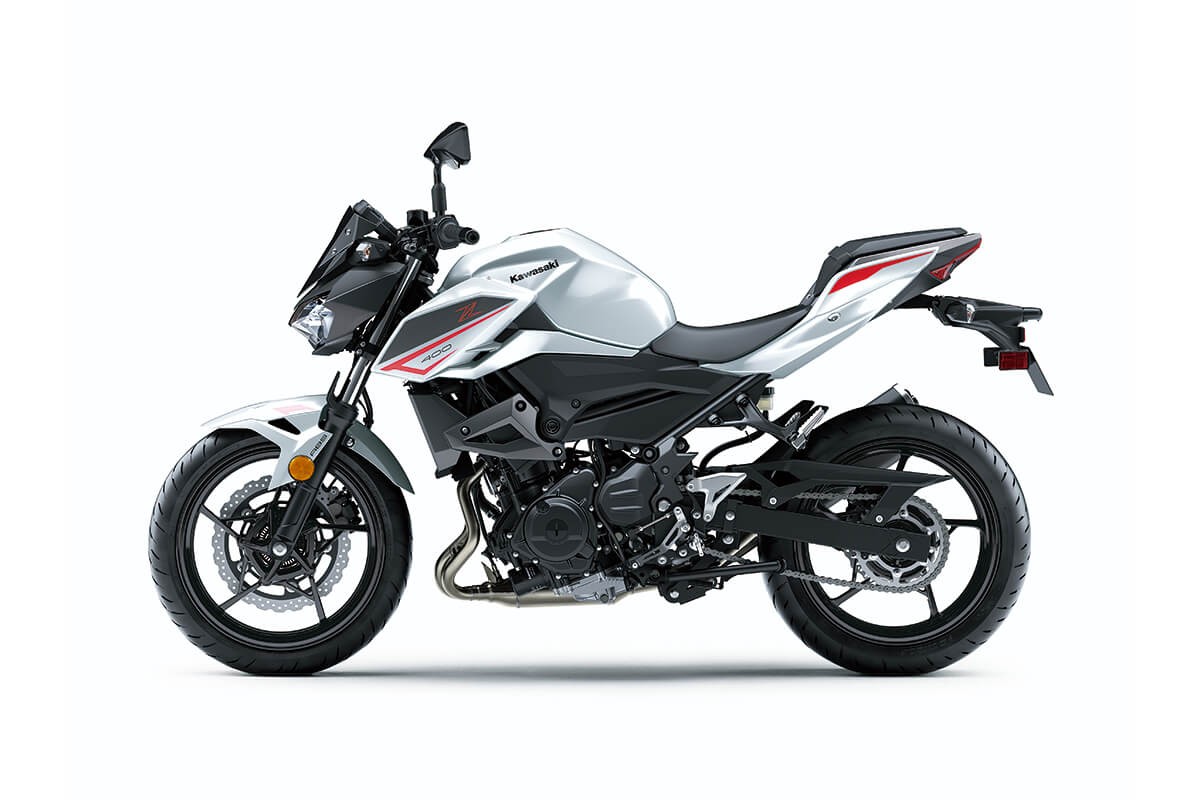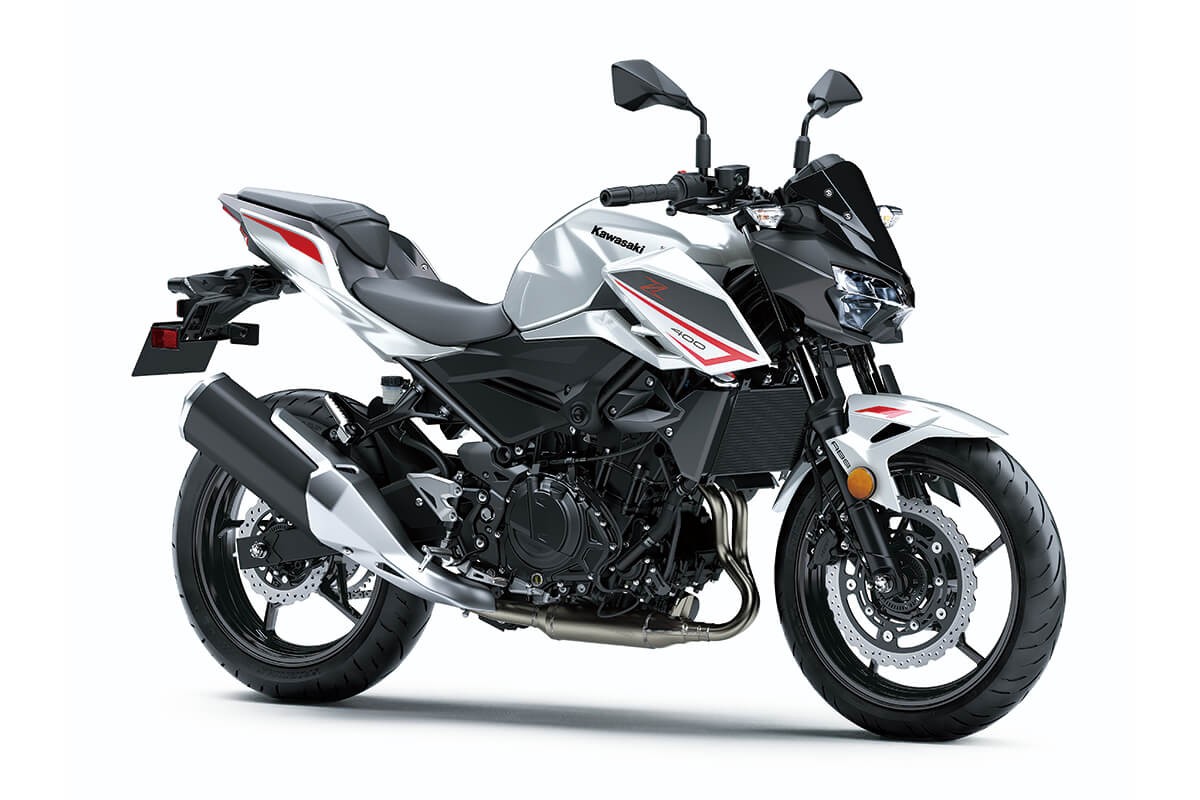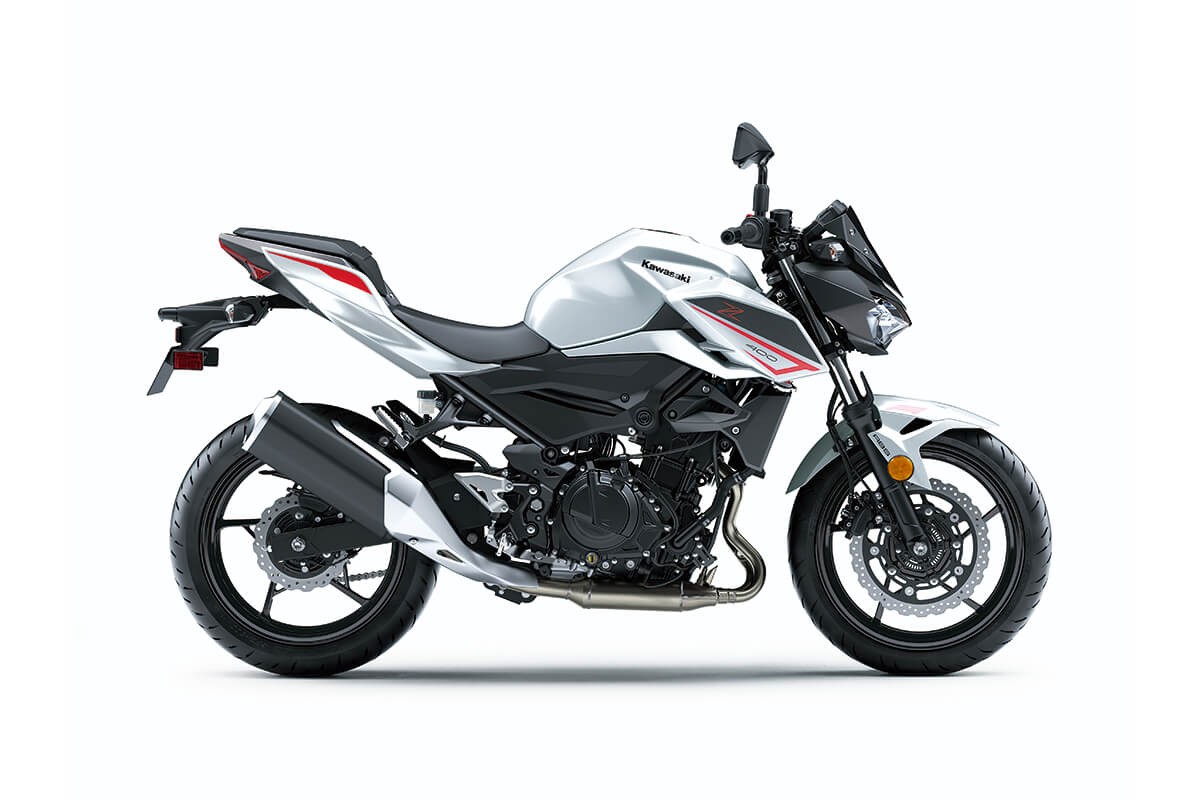The 2022 Kawasaki Z650: A Hooligan You’ll Be Happy to Hang With
Contents
Naked bikes have been popular for at least a few years now, in part thanks to the fact that many make excellent platforms for custom cafe racers. And Kawasaki—always a brand with their fingers on the pulse of motorcycling trends—have created an excellent, approachable mid-size standard for riders who want to tinker, as well as those who just want a kickass factory naked to bomb around town on.
A lot of the major Japanese motorcycle marques haven’t made significant upgrades to their best-selling models this year—the updates have been largely cosmetic, and that’s the case with the 2022 Z650 as well. The 649cc parallel-twin engine is the same one from last year, producing 67 hp @ 8,000 rpm and 48.5 lb-ft of torque @ 6,500 rpm.
Color options are what really set this year’s offering apart from its predecessors. The 2022 Z650 comes in metallic spark black/metallic flat spark black, candy lime green/metallic spark black, and pearl robotic white/metallic matte graphene steel gray.
Dunlop Sportmax Roadsport 2 tires also come stock on the Z650, and you get horizontal back-link rear suspension to carry you seamlessly over bumps in the road. Sitting solidly in the midst of the 2022 Kawasaki motorcycle lineup, this bike starts at $7,549 USD / $8,499 CAD.
On this page: we’ve curated specs, features, news, photos/videos, etc. so you can read up on the new 2022 Kawasaki Z650 in one place.
Model Overview
General Info
- Price: $7,549 USD / $8,499 CAD
- Key Features:
- Horizontal back-link rear suspension
- Dunlop Sportmax Roadsport 2 tires
- Economical riding indicator
- Smartphone connectivity
Main Specs
- Engine: 649cc parallel-twin engine
- Power: 67 hp @ 8,000 rpm
- Torque: 48.5 lb-ft @ 6,500 rpm
- Curb Weight: 412 lbs (187 kg)
- Seat Height: 31.1 in (790mm)
Competitors
2022 Kawasaki Z650 Specifications
ENGINE |
||
| Engine | 649cc, 4-stroke, 2-cylinder, DOHC, liquid-cooled | |
| Power | 67 Hp | |
| Bore x Stroke | 83.0 x 60.0mm | |
| Compression Ratio |
10.8:1
|
|
| Fuel System | DFI® with Keihin 36mm throttle bodies | |
| Starter | Electric | |
| Lubrication | ||
DRIVETRAIN |
||
| Clutch | ||
| Transmission | 6-speed, return shift | |
| Final Drive | Sealed chain | |
CHASSIS |
||
| Suspension Front | Telescopic fork/4.9 in | |
| Suspension Rear | Horizontal back-link with adjustable preload, swingarm/5.1 in | |
| Brakes Front | Dual 300mm petal-style discs with two-piston calipers, ABS | |
| Brakes Rear |
Single 220mm petal-style disc, ABS
|
|
| Tires Front | 120/70 ZR17 | |
| Tires Rear | 160/60 ZR17 | |
| Fuel Tank Capacity | 4.0 gal | |
| Color |
Rideology the App Smartphone Connectivity, TFT Instrumentation
|
|
ELECTRICAL |
||
| Ignition | TCBI with electronic advance | |
| Spark Plugs | ||
| Headlight | LED | |
| Tail Light | LED | |
DIMENSIONS |
||
| Overall Length | 81.3 in | |
| Overall Width | 30.1 in. | |
| Overall Height | 41.9 in | |
| Wheelbase | 55.5 in | |
| Ground Clearance | 5.1 in | |
| Seat Height | 31.1 in | |
| Curb Weight | 412.3 lb* | |
WARRANTY |
||
| Warranty | 12 Months | |
| Kawasaki Protection Plus | 12, 24, or 36 months | |
2022 Kawasaki Z650 Features
Assist & Slipper Clutch
Under normal operation, the assist cam functions as a self-servo mechanism, pulling the clutch hub and operating plate together to compress the clutch plates. This allows the total clutch spring load to be reduced, resulting in a lighter clutch lever feel when operating the clutch.
When excessive engine braking occurs – as a result of quick downshifts (or an accidental downshift) – the slipper cam comes into play, forcing the clutch hub and operating plate apart. This relieves pressure on the clutch plates to reduce back-torque and helps prevent the rear tire from hopping and skidding. This race-style function is particularly useful when sport or track riding.
Dual Throttle Valves
On models with dual throttle valves, there are two throttle valves per cylinder: in addition to the main valves, which are physically linked to the throttle grip and controlled by the rider, a second set of valves, opened and closed by the ECU, precisely regulates intake airflow to ensure a natural, linear response. With the air passing through the throttle bodies becoming smoother, combustion efficiency is improved and power is increased.
Economical Riding Indicator
While effective vehicle speed and engine speed may vary by model, paying attention to conditions that cause the “ECO” mark to appear can help riders improve their fuel efficiency – a handy way to increase cruising range. Further, keeping fuel consumption low also helps minimize negative impact on the environment.
Smartphone Connectivity
ABS (Anti-lock Brake System)
Horizontal Back-link Rear Suspension
2022 Kawasaki Z650 Photos
2022 Kawasaki Z650 Videos
2022 Kawasaki Z650 Review
Kawasaki Z650 In Depth Review 2022. The only Kawasaki you’ll ever need!
Links
Kawasaki Official Websites


